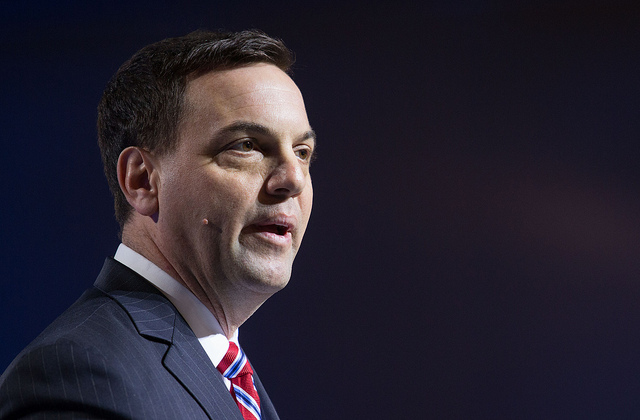Please support our coverage of democratic movements and become a monthly supporter of rabble.ca.
I was one of the first economists to notice the mathematical problems in the Ontario Progressive Conservative election platform, and to analyze their implications for the party’s centrepiece “million jobs” plan. The party misunderstood its own consulting reports, and consequently magnified (by up to 8 times) the consultants’ estimates of jobs created by various PC policy proposals (like corporate tax cuts and cancelling renewable energy programs). Other economists confirmed the numbers did not add up, and the muddled math consequently became a major campaign issue.
Now, as the campaign wraps up, it is interesting to look back on the significance of this mathematical fiasco for the choice facing Ontarians. One possible outcome would have been for the Conservatives to simply acknowledge the error and move on. The mistake was likely committed in haste by eager backroom Tory staffers, trying hard to generate the desired million-job total. An error like that is embarrassing, but not defining. Everyone makes mistakes. And as many analysts noted, employment projections are speculative in any event (even when they are added up correctly). The issue would have died in a day or two.
But Tim Hudak wouldn’t go there. Some reporters cited Tory insiders at least acknowledging the problem. But Mr. Hudak remained adamant the original numbers were valid. Perversely, that stubbornness probably helped keep the issue alive. Moreover, how the Conservatives handled the math problem ultimately became more damaging than the arithmetic itself, for three big reasons.
First, Mr. Hudak’s determination to deny the undeniable raised questions about his character when confronted with tough situations. Imagine a truly important scandal: perhaps one involving risks to public safety, or malfeasance of some kind — things that can’t be brushed off as “matters of opinion.” (Math is not actually an opinion, anyway.) Will obfuscation and denial define his response to other challenges?
Second, the debate over the numbers inspired analysts to take a closer look at the assumptions behind the PC plan, not just its math, and this raised deeper worries about the intellectual and political pedigree of the Conservative platform. There were two separate consulting reports misreported by the Tories in their jobs tally. One was from the Conference Board of Canada, on the effect of corporate and personal tax cuts; it was unconvincing, but inoffensive.
The other report, however, became hotly controversial — and for good reason. It was prepared by a U.S. consultant Benjamin Zycher, who has worked for many far-right causes (some funded by the Koch brothers of Tea Party fame), has strongly advocated so-called “right-to-work” laws for Ontario, and has expressed startling opinions on subjects ranging from environmentalism to how Michelle Obama received her Princeton degree.
Mr. Zycher’s report for the PCs has been thoroughly criticized by several economists for shoddy methodology, data errors, and more. But it’s the underlying philosophical assumptions of his work for the PCs that should raise the loudest alarms. His economic model of “deregulation” is actually based on Ontario mimicking the fiscal policies and labour laws of places like Mississippi and Arkansas — and then asserting that this will make Ontario richer. (Of course, Ontario is already far richer than those places.) The mere fact the PCs would hire this man to flesh out their electoral platform is another indication of how far right they have aimed.
Thirdly, the Conservative effort to “manage” the math problem speaks volumes about their overall electoral strategy. The idea is to consolidate a core of highly motivated supporters, and hope for a convenient vote split among the other parties. They could then conceivably take office with barely more than 35 per cent of the vote. This explains the hard-right platform: Mr. Hudak is speaking first and foremost to his own base, not the whole electorate. In this world of calculated “wedge politics,” merely acknowledging a mathematical mistake could be interpreted as a demoralizing (and demobilizing) sign of weakness in the eyes of unapologetic Conservatives — those who hardly care whether their platform adds up or not.
The original mathematical problem, therefore, was just the tip of the iceberg. Through its response to the debacle, the Conservative leadership revealed its colours: a group that puts ideology ahead of evidence, and that will let nothing (not even math) distract from a strategy to win office by starkly dividing the electorate along numerous schisms of good versus evil. All that should be more concerning to Ontarians, than whether or not they can add.
Jim Stanford is an economist with Unifor. This article was first published in the Globe and Mail.
Photo: manningcentre/flickr




